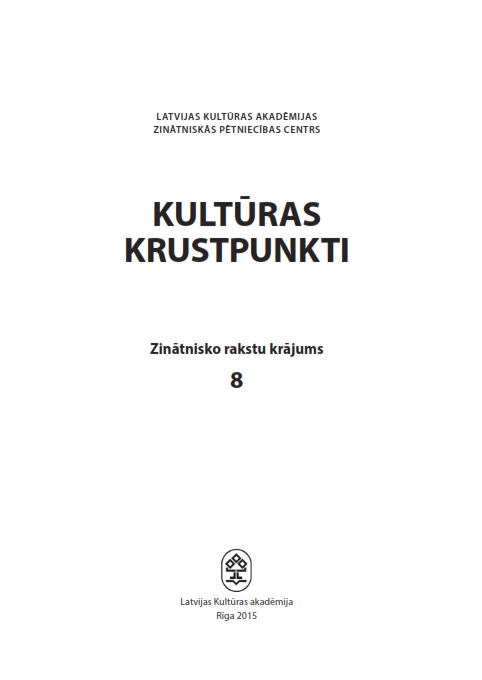PROLETĀRISKĀS MĀKSLAS APRISES STARPKARU POSMA LATVIJAS KREISAJĀ PERIODIKĀ
REFLECTION OF THE PROLETARIAN ART IN THE LEFT-WING PERIODICALS OF THE INTERWAR PERIOD IN LATVIA
Author(s): Stella PelšeSubject(s): Cultural history, Visual Arts, Political history, Sociology of Culture, Interwar Period (1920 - 1939), Sociology of Politics, Sociology of Art, History of Art
Published by: Latvijas Kultūras akadēmija
Keywords: proletarian art; left-wing periodicals; Marxism; Activism; Constructivism
Summary/Abstract: In the left-wing magazines of the 1920s and 1930s, the visual art has been analysed from variously emphasised left-wing positions; even though, on the whole, literature seemed to be a more important weapon in the ideological battle. “Laikmets” (“Epoch”) (1923) was the least politicised periodical, advocating active, modern art opposed to stagnant bourgeois traditions, and promoting, for instance, the activism of author Andrejs Kurcijs, which was related to the ideas of the French purism. “Domas” (“Thoughts”) (1912–1915; 1924–1934) was a more long-lived periodical, aspiring to be a sophisticated culture magazine with more elaborate essays, such as Kurcijs’s draft for his publication “On Art” and the article “The Sociology of Creativity” by literary scholar Pēteris Birkerts. The highlights of the magazine “Trauksme” (“Alert”) (1928– 1929) included the statement by poet Pēteris Ķikuts about constructivism being more akin to the expressionists’ depth than to the impressionists’ superficial sliding over the surface of life. In “Signāls” (“Signal”) (1928–1930), a publication which was socialdemocratic in orientation, Voldemārs Branks wrote about art, inspired by the ideas of Leo Tolstoy and Hippolyte Taine, as well as emphasising the importance of the content and the accessibility of art. On the other hand, magazine “Kreisā Fronte” (“Left Front”) (1928–1930), edited by Linards Laicens, was related to the Russian constructivism by calling for the abandonment of the visual art in the name of producing useful things. The coexistence of modernistic, realistic and utilitarian versions echoed the Russian and European art processes of the time with the rehabilitation of mimetic traditions and ideologically motivated discrediting of the avant-garde. With the establishment of the Latvian authoritarian regime in 1934, the era of the leftist magazines in Latvia, which revealed the controversial attempts to display a more progressive outline of art, came to an end.
Journal: Culture Crossroads
- Issue Year: 8/2015
- Issue No: 2
- Page Range: 169-178
- Page Count: 10
- Language: Latvian

